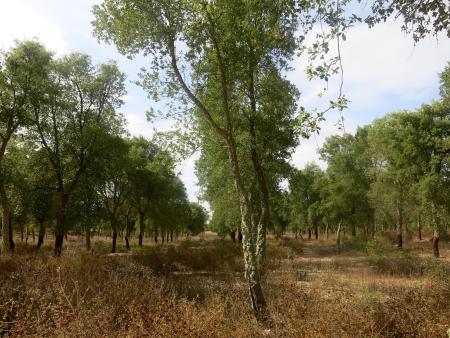
Objective:
Assess inter-tree competition in permanent plots established in un-debarked, even-aged stands located in Portugal by i) comparing with the self-thinning line and ii) assessing when stand density affects cork production, iii) stand structure and iv) tree relative growth rate (RGR) pattern over tree size. Spacing coefficient (SC) values < 1.25 are assumed to affect cork production; therefore, detecting when stand density is approaching this value is important. Relative spacing (RS) is easier to evaluate, being important to find the RS value equivalent to a SC = 1.25.
Context:
Cork oak plantations are usually established with higher densities than those observed in adult naturally regenerated stands. Since there are no recommendations on thinning time, this is subjectively defined by the landowners. If thinning can be delayed until the second cork extraction, tree selection can be based on cork quality and not only on tree form, size and vigour. Understanding inter-tree competition and how it affects stand structure and tree growth is relevant to support the definition of optimal stand densities, thinning schedules and ultimately cork quality.
Contacts:
Margarida Tomé, magatome@isa.ulisboa.pt
Sónia Faias, soniapf@isa.ulisboa.pt
Joana Amaral Paulo, joanaap@isa.ulisboa.pt
Further information:
Faias, S.P., Paulo, J.A., Tomé, M., 2019. Inter-tree competition analysis in undebarked cork oak plantations as a support tool for management in Portugal. New Forests :1-17. https://doi.org/10.1007/s11056-019-09739-4